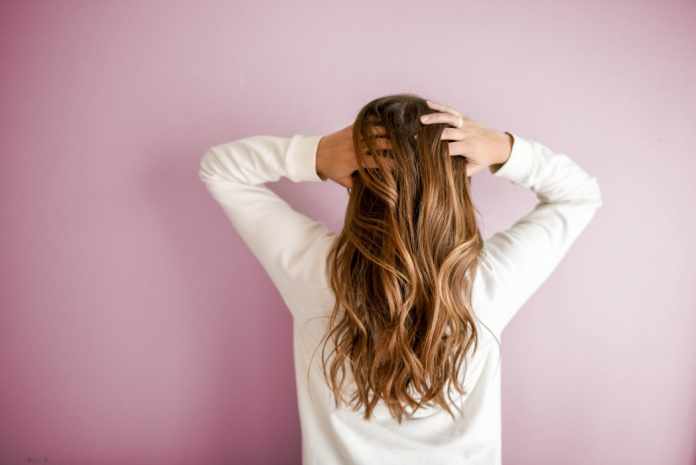As you age, your hair naturally changes in color, texture, and thickness. Hair loss becomes extremely common for women in their middle age. The Cleveland Clinic reports that over 50% of women in the United States will experience extreme hair loss. Let’s be honest, hair thinning seems dreadful, but it doesn’t have to be. Continue reading for the do’s and don’ts for thinning hair in your middle age.
What is Thin Hair?
Thin hair refers to the number of individual strands rather than the width of each hair shaft. Your hair is made of protein strands and typically has a life of two to seven years. Factors like age, diet, and genetics can determine how fast it grows. Your hair’s life cycle becomes shorter with age; as a result, thinner, weaker hair typically grows in. Thin hair can increase your scalps visibility and make your strands prone to breakage.
The hair thinning process can be affected by uncontrollable factors like genetics or menopause. You can blame your family for hair loss along the top of the head. This type of hair loss is female-pattern hair loss, or androgenetic alopecia. Furthermore, once menopause starts, your estrogen levels drop causing hair-growth to slow. Also, post-menopausal inflammation can shrink and destroy hair-follicles and leave scarring, causing hair to thin and the hairline to recede. In these cases, hair grows slower and falls out more quicky.
The Do’s for Thinning Hair
- Feed Your Scalp!
A healthy environment is essential for plants and food to grow, hair is no different. Strong hair starts with the scalp. Scalp skin is similar to normal skin in that it has an epidermis and dermis, but also has a higher concentration of large, terminal hair follicles. Scalp damage results from excessive sun exposure, hair care products and treatments, and nutritional imbalances.
To efficiently care for your scalp, use products with gentle ingredients and appropriate pH levels. Also, a scalp serum is a beneficial way to repair damage, increase growth and shine, and protect against environmental damage. If your scalp is prone to dryness, the right serum will gently remove excess buildup and provide more hydration to promote growth.
- A Nutrient-Rich Diet
One way to control your thinning locks is through a well-balanced diet. A nutritional imbalance can lead to hair loss. Your hair cells require a balance of complex carbohydrates, iron, vitamins and minerals to function at their highest level. Additionally, hair follicles are mostly made of protein, so it is essential to have an abundance of protein in your diet.
Include these nutrients into your regimen to overcome deficiency-related hair thinning:
- Protein: lean meats, tofu, low-fat cheese, and quinoa
- Biotin: lentils, carrots, walnuts, and cauliflower
- Iron: lean beef, soybeans, eggs, tuna and spinach
- Omega-3: salmon, sea bass, flax seeds, soybeans, and canola oil
- Zinc: shellfish, sunflower seeds, beef, lamb, and pine nuts
- B Vitamins: pork, beans, oatmeal, and low-fat dairy foods
- Use Volumizing Hair Products
Volumizers work to strengthen each strength of hair, while plumping them to provide more volume. Certain styling products can weigh down your hair, which tend to make your hair look even thinner. Volumizing options will add fullness in addition to cleansing and conditioning your strand.
A volumizing shampoo and conditioner, like the ones from Better Not Younger, will spread easily through thin strands and gently cleanse your hair without damaging fragile cuticles. Also, for maximum volume you can finish styling your almost-dry hair with a blow dryer. Blow dry the root area and apply gentle tension with a brush to build volume.
The Don’ts for Thinning Hair
- Over Wash
When you over wash your hair, your oil glands over-compensate for the loss of oils stripped by your shampoo. Instead, you have to train the oil glands to not over-produce oil, thus washing your hair less. You will have to work up to this, but the ultimate goal is to wash your hair every three to four days. Over washing your hair can lead to dry and brittle strands.
Additionally, when it’s time to wash, avoid shampoos with sulfate. The salt found in sulfates will strip away the natural moisture in your hair. They act as detergents, washing away conditioner layers and free lipids present inside your cuticle, which leads to damaged hair. A sulfate-free shampoo will help balance your hair’s natural moisture and control scalp inflammation.
- Wear Tight Hair Styles
It’s time to ditch the tightly wound-bun and high pony-tail. Plastic elastics and tight hairstyles that pull your hair away from your crown will break and split your hair strands. To minimize thinning, use fabric-wrapped hair tie and opt for loose hairstyles.
- Check Your Medications
Certain classes of medication may promote hair loss. The most common medications associated with hair loss are certain blood thinners and blood-pressure drugs known as beta-blockers. Also, cholesterol-lowering medication (atorvastatin, simvastatin) and gout medication (colchicine) are linked to hair loss. It is best to check with your doctor for the side effects of your medications. Based on your condition, it may be possible to lower the dosage or switch medications.
- Stress
Emotional stress is linked to hair loss, called telogen effluvium. The majority of hair follicles are in the growth phase (anagen). The hair follicles transition to the resting phase (telogen) the hair sheds. When you are experiencing stress, this triggers the hair to shirt into the telogen phase at once. This shift can lead to excessive hair shedding or loss.
It is impossible to control all situations that may cause emotional stress. If it is possible, meditate, exercise, or treat yourself to a spa day to relieve yourself from unnecessary stress.



















